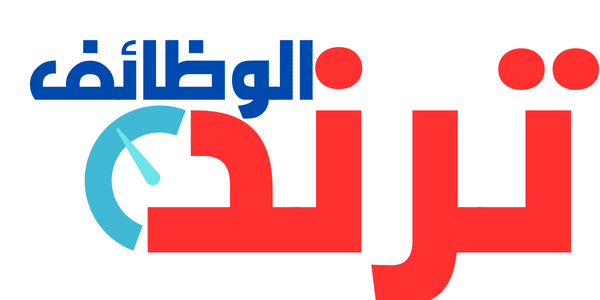In today’s fast-paced consumer environment, cashback programs have emerged as significant financial incentives for buyers and businesses alike. These programs are designed to reward consumers for their purchases by returning a percentage of the money spent back to them. With an increasing number of retailers and service providers adopting these schemes, understanding the financial implications of cashback programs is essential. This article explores how such programs function, their benefits and drawbacks for both consumers and companies, and the broader economic impact they may foster in 999.
Understanding Cashback Programs

Cashback programs can be classified into various types, depending on their structure and execution. They typically involve credit card companies, banks, or retailers offering consumers a certain percentage of their spending back in cash or rewards.
How Cashback Programs Work
At its core, a cashback program operates on the principle of rewarding customer loyalty. When consumers make purchases using a participating payment method, a predetermined percentage of that transaction is returned to them. The process generally involves the following steps:
- Transaction: Customers use a specific credit card, debit card, or app affiliated with a cashback program.
- Earning Cashback: A percentage of the transaction amount is recorded as “cashback” earned.
- Redemption: Consumers can later redeem this cashback either as a statement credit, direct deposit, or gift vouchers, among other options.
This simplicity in operation has made cashback programs appealing to a wide range of shoppers, from casual buyers to dedicated bargain hunters.
Types of Cashback Programs
Cashback programs can be categorized based on the entities involved and how they distribute rewards. Some commonly seen varieties include:
- Retailer-Specific Programs: Many retailers offer their own cashback programs to encourage repeat business. For example, store loyalty cards may provide cashback specifically when shopping at that retailer.
- Credit Card Cashback: Many credit cards offer cashback on all purchases made with the card. These programs may feature rotating categories that provide higher percentages during particular months.
- Third-Party Apps and Websites: Various apps compile offers from multiple retailers, allowing users to earn cashback irrespective of where they shop.
By understanding these different types of cashback programs, one can better evaluate their potential financial implications.
Legal and Regulatory Aspects
While cashback programs offer attractive incentives, they must also adhere to regulatory guidelines. Consumer protection laws often govern how these programs operate, ensuring transparency and fairness. Those who participate should be aware of their rights under such regulations, which often include:
- Clear Communication: Companies must clearly disclose the terms and conditions associated with their cashback offers.
- Limitations: There could be restrictions related to maximum cashback amounts, redemption methods, and expiration dates.
These legal considerations add another layer to the multifaceted nature of cashback programs, impacting both consumers and businesses.
See more: in999
Financial Benefits for Consumers

The allure of cashback programs primarily lies in the financial advantages they provide to consumers. By effectively leveraging these programs, shoppers can see notable returns on their expenditures.
Direct Monetary Returns
One of the most obvious benefits of cashback programs is the direct monetary return they provide. Consumers can accumulate cashback rewards over time, significantly reducing their overall expenses.
- Budgeting Assistance: Cashback incentives allow consumers to better manage their budgets. Knowing that they will receive a portion of their expenditure back can make spending feel less burdensome.
- Smart Shopping: Since many cashback programs are tied to promotional events, savvy consumers can plan their purchases around these offers, maximizing their benefits.
When consumers adopt a strategic approach toward utilizing cashback programs, the accumulated rewards can lead to substantial savings throughout the year.
Incentives for Loyalty
Cashback programs are designed to evoke customer loyalty. By consistently rewarding consumers for choosing specific retailers or payment methods, companies strengthen their relationships with customers.
- Brand Affinity: When consumers perceive added value in shopping at a particular store due to cashback offerings, they are more likely to develop a preference for that brand over competitors.
- Repeat Purchases: Businesses benefit from increased frequency of transactions as cashback programs entice consumers to return and make additional purchases.
This cycle creates a win-win situation—consumers save more through rewards while companies enjoy sustained patronage.
Enhanced Financial Awareness
Participating in cashback programs can foster greater financial awareness among consumers. Regular tracking of earnings encourages individuals to evaluate their spending habits critically.
- Spending Patterns: By analyzing purchase histories, consumers can identify areas where they overspend and adjust accordingly.
- Better Choices: Awareness of cashback opportunities can lead individuals to make smarter purchasing decisions—for instance, opting for products that yield higher cashback rates.
Such financial literacy is invaluable in promoting responsible spending behavior.
Challenges and Pitfalls for Consumers
Despite the benefits, cashback programs also come with inherent challenges and potential pitfalls. Consumers need to navigate these carefully to ensure they are truly reaping the rewards.
Overspending Tendencies
One of the dangers of cashback programs is the psychological effect they can have on consumer behavior. The perception of “earning money back” may inadvertently encourage individuals to spend more than they normally would.
- Increased Spending: The allure of accumulating cashback may tempt consumers to buy items they don’t genuinely need, undermining the very concept of saving.
- Impulse Purchases: The excitement of a cashback bonus can lead to impulsive buying, resulting in unnecessary expenses and debt accumulation.
Being mindful of these tendencies is crucial for maintaining healthy financial habits.
Complicated Terms and Conditions
Cashback programs often come with terms that can confuse or mislead consumers. Without careful reading, individuals may find themselves missing out on rewards or incurring hidden costs.
- Expiration Dates: Many cashback rewards have expiration dates, and failure to redeem within this timeframe results in forfeiture.
- Maximum Limits: Some programs impose caps on how much cashback can be earned, which may not be immediately evident.
Consumers should take the time to read and understand the fine print surrounding cashback offers, ensuring they maximize their benefits without falling victim to unexpected limitations.
Payment Method Dependencies
Cashback rewards are frequently tied to specific payment methods, limiting the flexibility consumers might have otherwise enjoyed.
- Limited Options: If a consumer prefers a payment method that does not incorporate cashback rewards, they may feel pressured to switch to a less preferred option.
- Dependency on Credit Cards: Many lucrative cashback offers are linked to credit cards, which may lead consumers to accrue debt if not managed wisely.
Understanding the dependencies of cashback programs on payment methods is vital for safeguarding against unintentional financial pitfalls.
Financial Implications for Businesses
Beyond the individual consumer perspective, cashback programs also carry significant financial implications for businesses. Understanding these effects can help companies strategize better in their marketing efforts.
Increased Customer Acquisition
Cashback programs can serve as powerful marketing tools for attracting new customers. Offering incentives allows businesses to stand out in competitive marketplaces.
- Attractive Offers: Well-structured cashback programs can entice potential customers to try a new brand or service, effectively expanding the customer base.
- Marketing Differentiation: In saturated markets, cashback offerings can set a company apart by showcasing its commitment to customer satisfaction.
As businesses adopt cashback programs, they can leverage these incentives to gain traction in crowded industries.
Impact on Profit Margins
While cashback programs can drive sales, they also present challenges regarding profit margins. Businesses must strike a delicate balance between incentivizing purchases and maintaining profitability.
- Reward Costs: Each cashback transaction translates to a cost for the business. If poorly managed, these costs could jeopardize overall profit margins.
- Strategic Planning: Businesses need to calculate and anticipate the effects of cashback programs on their finances, ensuring that they remain sustainable in the long term.
Developing well-thought-out cashback strategies can mitigate risks while capitalizing on the rewards offered.
Brand Loyalty and Retention
Cashback programs serve as excellent tools for fostering brand loyalty. Businesses that prioritize customer retention tend to thrive—even in challenging market conditions.
- Engaging Offers: By providing consistent cashback offerings, companies can build stronger relationships with existing customers, leading to repeat purchases.
- Competitive Advantage: In markets where customer loyalty is paramount, cashback programs can provide businesses with a competitive edge over rivals lacking similar incentive systems.
Investing in cashback programs can yield impressive returns in terms of brand loyalty and customer retention rates.
Economic Impacts of Cashback Programs
The implementation of cashback programs extends far beyond individual transactions; it carries implications for the broader economy. Understanding these impacts can help shape public policy and consumer behavior.
Consumer Spending Behavior
Cashback programs tend to influence consumer spending behavior positively. As more individuals engage with these programs, overall consumption patterns shift.
- Boosting Expenditure: The promise of cashback may motivate consumers to make larger purchases or try premium products, stimulating overall demand in various sectors.
- Economic Growth: Increased consumer spending directly supports economic growth by driving revenue for businesses and generating tax revenues for governments.
These elevated levels of spending can create a ripple effect, benefiting multiple layers of the economy.
Employment Opportunities
With the expansion of cashback programs comes the potential for job creation. Businesses looking to implement these strategies often require additional personnel for various functions.
- Hiring Needs: From customer service representatives to data analysts—companies may need to hire talent to manage cashback programs effectively.
- Economic Contributions: The resultant job creation contributes positively to local economies, boosting employment rates and increasing disposable income.
As cashback programs continue to proliferate, they hold the potential to stimulate job growth across various sectors.
Challenges for Retailers
While cashback programs can enhance consumer engagement, they may also introduce challenges for retailers that must be navigated thoughtfully.
- Market Saturation: An abundance of cashback programs can lead to diminishing returns as businesses compete to attract customers with increasingly generous offers.
- Strain on Resources: Small businesses may struggle to maintain cashback initiatives, particularly if they lack the infrastructure to support complex reward systems.
Addressing these challenges requires innovative thinking and adaptability from businesses aiming to sustain cashback offerings.
FAQs
What is a cashback program?
A cashback program is a financial incentive provided by retailers, credit card companies, or banks that rewards consumers a percentage of their spending back in cash or rewards when they make purchases.
Are cashback programs worth it?
Yes, cashback programs can be worth it if used strategically. Consumers can accumulate significant rewards over time, especially if they plan their purchases around cashback offers.
Do cashback rewards expire?
Many cashback rewards do have expiration dates, which vary by program. It’s essential to check the terms and conditions to avoid losing earned rewards.
Can I combine cashback programs?
Some cashback programs allow combining offers, while others do not. Always review the rules of each program to determine if stacking rewards is possible.
Is there a limit to how much cashback I can earn?
Yes, some cashback programs impose limits on the total amount of cashback that can be earned within a given period. Be sure to read the program’s terms for specifics.
Conclusion
Cashback programs are an intriguing blend of marketing strategy, consumer psychology, and financial management that can reshape shopping behaviors and business practices. While they offer enticing rewards and savings for consumers, they also pose challenges that need to be navigated carefully. For businesses, these programs can drive customer loyalty and revenue growth but require thoughtful implementation to ensure profitability. Understanding the financial implications from both perspectives is essential for making informed decisions about participating in, or implementing, cashback initiatives. Ultimately, as this trend continues to evolve, it stands to redefine the landscape of consumer spending and retail strategies in ways we can only begin to imagine.
